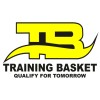- Basics of HTML/CSS with Bootstrap
HTML (HyperText Markup Language) is the standard language for creating
web pages. It defines the structure of a web page using elements like headings,
paragraphs, and links.
CSS (Cascading Style Sheets) is used to style HTML elements, controlling
their layout, colors, fonts, and more.
Bootstrap is a popular CSS framework that provides pre-designed templates
and components, making it easier to create responsive and visually appealing
web pages.
Learning Objectives:
Understand HTML tags and structure.
Learn how to style web pages using CSS.
Utilize Bootstrap components for responsive design.
- Databases Connection with PHP (CRUD)
PHP (Hypertext Preprocessor) is a server-side scripting language used to
create dynamic web pages. It can interact with databases to perform CRUD
(Create, Read, Update, Delete) operations.
By using PHP with a database like MySQL, you can build web applications that
store, retrieve, and manipulate data. PHP code embedded in HTML handles
database connections and queries, allowing for dynamic content generation
based on user interactions.
Learning Objectives:
Set up a PHP environment.
Connect to a MySQL database.
Perform CRUD operations using PHP.
Beginner PHP projects are small, practical applications that help you understand
the basics of PHP programming and web development. Examples include
creating a simple blog, a to-do list, a contact form, or a basic user authentication
system. These projects typically involve using PHP for server-side processing,
interacting with a database, and generating dynamic HTML content.
Learning Objectives:
Apply PHP in real-world scenarios.
Build small-scale web applications.
Enhance problem-solving skills with practical projects.
Building projects involves applying your knowledge and skills to create
functional web applications. This process includes planning, designing, coding,
testing, and deploying your projects. By working on projects, you gain hands-on
experience and improve your problem-solving abilities. Projects can range from
simple websites to complex web applications, depending on your skill level and
goals.
Learning Objectives:
Develop a complete web application from scratch.
Understand the project lifecycle.
Gain practical experience in coding, testing, and deployment.
- Build Custom MVC (CMS) Framework
Building a custom MVC (Model-View-Controller) framework involves
creating a structured foundation for web applications. MVC separates an
application into three main components: the model (data), the view (user
interface), and the controller (business logic). A custom CMS (Content
Management System) framework allows you to manage content dynamically,
providing a flexible and scalable solution for web development.
Learning Objectives:
Understand the MVC architecture.
Build a custom framework from the ground up.
Create a dynamic CMS for content management.
Learning an existing framework, such as Laravel, Wordpress, or CodeIgniter
for PHP, involves understanding its architecture, components, and best
practices. These frameworks provide pre-built modules and libraries that
simplify common tasks, such as routing, database interactions, and
authentication. Mastering a framework can significantly speed up development
and improve the maintainability of your code.
Learning Objectives:
Get familiar with popular PHP frameworks.
Understand the framework's structure and components.
Implement best practices in web development.
- Build Projects with Existing Frameworks
Building projects with existing frameworks allows you to leverage their features
and tools to create robust and scalable applications. By using a framework, you
can focus on implementing your application's unique functionality without
reinventing the wheel. This approach also helps you follow best practices and
ensures your code is more secure and maintainable.
Learning Objectives:
Develop applications using established frameworks.
Utilize framework features to enhance your projects.
Follow best practices and coding standards.
Getting familiar with CMS (Content Management Systems) involves learning
how to use platforms like WordPress to create and manage websites. CMS
platforms provide user-friendly interfaces for content creation, editing, and
publishing. They also offer a wide range of themes, plugins, and extensions that
add functionality and customization options, making it easier to build and
maintain websites without extensive coding knowledge.
Learning Objectives:
Understand how to use popular CMS platforms.
Manage website content efficiently.
Customize CMS with themes, plugins, and extensions.
Benefits
- Working on Live Projects
- Certificate of Internship
- Job offer after Internship (Performance Based)
- No fees is charged for Internship
- Mentor to Guide and complete the tasks assigned to candidate


